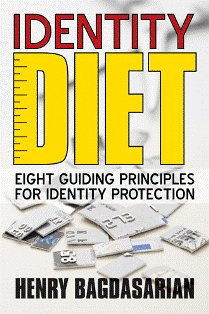|
RFID Credit Cards
RFID credit cards are often issued by banks and used by consumers to varying degrees in many parts of the world. It's estimated that about 10 percent of the credit cards in the U.S. are RFID embedded, however, it is expected that all credit cards will soon become RFID enabled. Europe has the bulk of most RFID credit cards used in the world and is experiencing huge problems in the areas of identity theft and credit card fraud due to exploitation of RFID technology. An RFID or Radio-frequency identification is a technology which uses radio waves to transfer information from an electronic tag also called RFID tag or label through a reader for the main purposes of identifying and tracking the object to which the tag is attached. The RFID technology is used in many areas of our society to not only identify and track objects but also provide instant information. The RFID chips can also be found in some passports, highway toll payment systems, pets, patients, many points of sale such as gas stations and humans. Some large department stores also use the RFID technology for inventory and shipping tracking purposes. RFID credit cards have been created to allow machine readers to obtain information from the RFID credit cards and complete credit card transaction without ever touching or swiping the cards. This technology speeds up the credit card transaction processing; however, it also provides the opportunity for thieves to obtain the card information without ever touching the credit card. The Risks The biggest risk of RFID credit cards is the speed by which the card information can be stolen and used to commit credit card fraud without ever touching the credit card. RFID readers can be easily bought online at a very low cost. When the identity thief gets close enough to a person who carries the credit card in his wallet, the credit card name, account number and expiration date are exported into the reader without ever touching the credit card. If you are not sure whether your credit card is RFID enabled, there are a few ways that could help you identify whether any of your cards are RFID credit cards including asking your banking institution, testing it at a point of sale or looking for visible signs of RFID chip on the credit card which looks like a 1/2" square integrated circuit in the middle of the card. Other RFID embedded objects may be less obvious such as chip implants in humans, animals and products. Disabling RFID Chips There are a few primitive ways that people attempt to disable an RFID chip but the best way is always to ask the banking institutions if they offer non-RFID cards that you could use. For example, some people microwave RFID embedded objects to disable the chip but this method does not come without other risks such as starting a fire or burning certain objects leaving a visible evidence that the object has been tampered with, making microwave an unsuitable method for killing the RFID tag in some objects such as passports. This method also damages the credit card’s magnetic strip on the back making it useless. Other methods some people use to disable RFID chips include piercing the chip with a knife or other sharp object, cutting the antenna to disrupt the transmission of the signal back to the reader, or using a hammer to slightly crack the chip. These methods leave some visible evidence of intentional damage and tampering which should discourage consumers to consider. The Good News The distance needed for the reader to extract information from credit cards is about 1 to 4 inches. Therefore, thieves must get really close to someone for stealing the card information which allows consumers to keep an eye on those people who get too close. There are some aluminum wallets which claim to protect RFID credit cards from theft. In my research for writing this article, I identified two companies which sell RFID theft and water proof wallets; Aluma Wallet and Ogon Wallets. Credit card companies continue to improve safety measures such as encrypting the card information. RFID credit and debit cards have been created to speed up a consumer’s experience when using credit cards; however, as you can see the convenience does not come without risks for the time being. The best protection against credit card theft is still limiting the number of credit cards we possess while we use them wisely and are aware of our surroundings. |